Anixter says:
Even though copper has a long history as the material of choice for conducting electricity, aluminum has certain advantages that make it attractive for specific applications.
Aluminum has 61 percent of the conductivity of copper, but has only 30 percent of the weight of copper. That means that a bare wire of aluminum weighs half as much as a bare wire of copper that has the same electrical resistance. Aluminum is generally more inexpensive when compared to copper conductors.
Fastmarkets says (and I don't claim to understand any of it):
Copper LME Averages Cash Ask ($/MT) Sep 2017 $6,583.19
Aluminium LME Official 3M Ask ($/MT) 21 Dec $2,125.50
So, if we need 1 MT (metric ton?) of copper it will cost $6.5k and we need half a ton of aluminium for the same conductivity that will cost $1.1k. That's a saving of > 80%.
The reason you don't see more copper may be for reasons explained by the continuation of the first article:
Aluminum conductors consist of different alloys known as the AA-1350 series and AA-8000 series. AA-1350 has a minimum aluminum content of 99.5 percent. In the 1960s and 1970s, due to the high price of copper relative to aluminum, this grade of aluminum began to be popularly used for household wiring. Due to low-quality workmanship at connections and the physical differences between aluminum and copper, high-resistance connections formed and became a fire hazard.
As a response, aluminum alloys were developed to have creep and elongation properties more similar to copper. These AA-8000 series alloys are the only solid or stranded aluminum conductors permitted to be used according to Article 310 of the 2014 National Electric Code*. AA-8000 series alloys meet the requirements of ASTM B800, Standard Specification for 8000 Series Aluminum Alloy Wire for Electrical Purposes–Annealed and Intermediate Tempers.
For completeness, the densities are:
metal g/cm³
copper 8.96
aluminum 2.70
